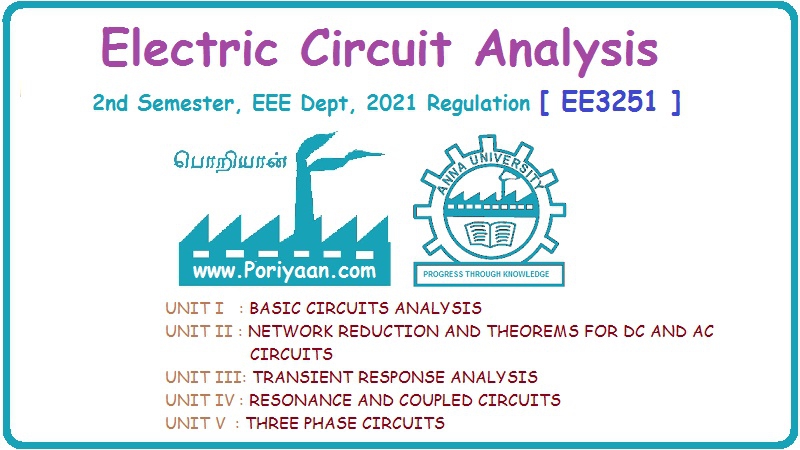Electric Circuit Analysis: Unit III: Transient Response Analysis
Natural and forced responses
Transient Response Analysis
The response determined by the internal energy stored in the network is called natural response.
NATURAL AND FORCED RESPONSES
On
applying KCL and KVL to a network containing R, L and C, we obtain a linear
differential equation with constant coefficients. The solution of this
differential equation represents the response of the network. The response or behaviour
of the network is governed by its internal stored energy and external energy
supplied by the source.
The
response determined by the internal energy stored in the network is called
natural response. It depends upon the type of elements, their size, the inter
connection of the elements. This response is independent of the source. In a
network, energy may be stored internally in the electric field of a capacitor
or in the magnetic field of an inductor. A natural response dies out gradually.
That is, it approaches zero as time becomes infinite. The natural response is
also known as transient response.
The
response or behavior determined by the application of external energy source is
called forced response. A forced response may be maintai. ed indefinitely if
energy is supplied continuously to make up losses. The complete or total
response of a network is the sum of the natural response and forced response.
The
external energy source or forcing function may be any type. For example it may
be direct voltage or current, sinusoidal source, an exponential function, a
ramp function.
The
complete solution of linear differential equation with constant coefficients
describing the network consists of two parts.
(a)
The particular integral, (b) Complementary function
The
particular integral represents the forced response due to the particular
driving source. It satisfies differential equation but not the initial
conditions. The forced response depends on both the network elements and
source.
The
complementary function is the solution of the differential equation with
forcing function set to zero. Therefore, the complementary function represents
the source-free response. This response is also called the natural response or
transient response.
Electric Circuit Analysis: Unit III: Transient Response Analysis : Tag: : Transient Response Analysis - Natural and forced responses
Related Topics
Related Subjects
Electric Circuit Analysis
EE3251 2nd Semester 2021 Regulation | 2nd Semester EEE Dept 2021 Regulation
